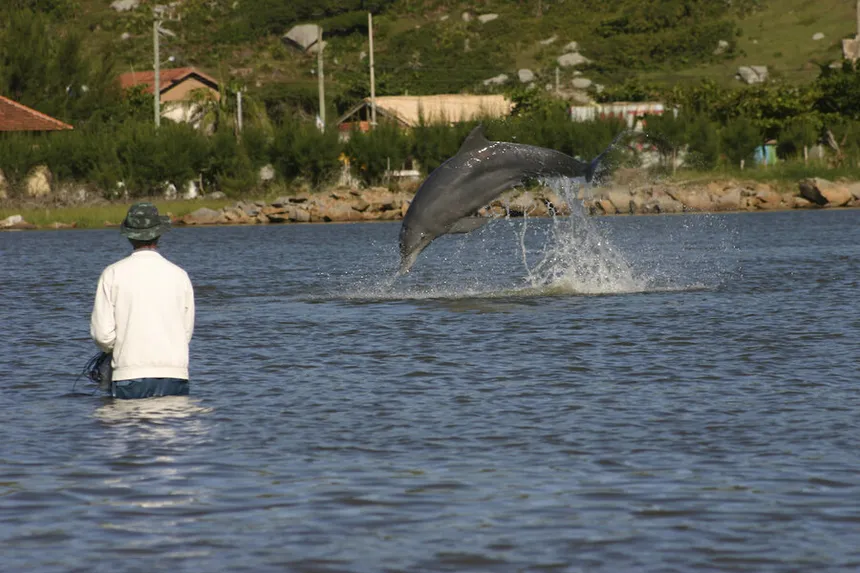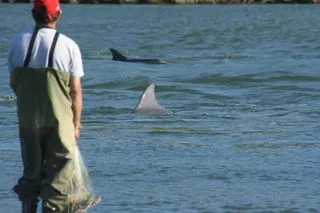In the seaside city of Laguna, Brazil, an unusual partnership has been observed between local fishermen and wild dolphins. For over 150 years, dolphins and humans have been working together to catch schools of migratory silverfish called mullet. This alliance has not only benefited the fishermen but also the dolphins, who have improved their own foraging skills.
Researchers from the University of Federal de Santa Catarina and Oregon State University have used drones, underwater sound recordings, and GPS devices to document the coordination between the dolphins and fishermen. The study, published in the journal Proceedings of the National Academy of Sciences, reveals that both species are highly skilled at reading each other’s body language, allowing them to work together effectively.
The fishermen, who are highly intelligent and long-lived social animals, rely on the dolphins to herd the fish towards the coast. The dolphins use sounds to find the schools of fish, emitting small clicks much like bats use echolocation. As the dolphins herd the fish, the fishermen run into the water holding hand nets, waiting for the dolphins to signal exactly where the fish are.
The most successful fishermen and dolphins are skilled at reading each other’s body language, and the fishermen get most excited when they see a “good” dolphin approaching the shore. The people categorize the individual dolphins as “good”, “bad”, or “lazy” based on their skill in hunting and affinity for cooperating with humans.

Laguna’s Fishermen and Dolphins Work Together to Catch Fish
The researchers used sonar and underwater microphones to track the positions of the dolphins and fish, while drones recorded the interactions from above, and GPS devices attached to residents’ wrists recorded when they cast their nets. The study shows that the more closely the people synchronized their net-casting to the dolphins’ signals, the more likely they were to trap a large catch.
The Laguna residents have developed a joint foraging culture that allows both species to benefit. However, the researchers worry that this unique alliance may be in danger due to pollution and the threat of industrial fishing methods replacing artisanal fishing. The study highlights the importance of preserving this cultural tradition and the need for greater awareness of the benefits of human-wildlife cooperation.
Dr. Stephanie King, a biologist from the University of Bristol, notes that this cooperative behavior is “really incredible” and that “both dolphins and humans are paying attention to each other’s behavior, and that dolphins provide a cue to when the nets should be cast.” Dr. Boris Worm, a marine ecologist at Dalhousie University, adds that “these dolphins and humans have developed a joint foraging culture that allows them both to do better.”
The study concludes that it is essential to protect this unique alliance and the cultural tradition that has been passed down through multiple generations of both species. With growing concerns about the decline of human-wildlife cooperation, the researchers hope that greater awareness of the Laguna alliance can drive support to preserve it.











































